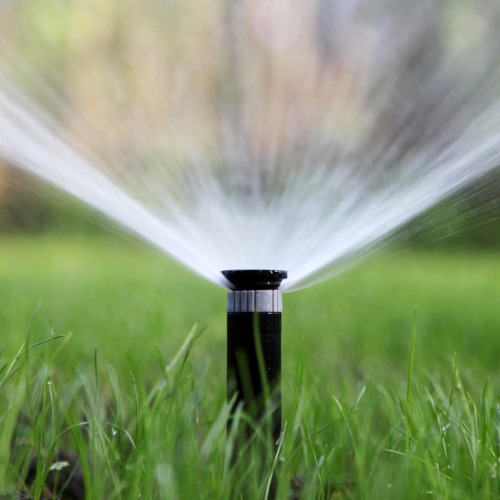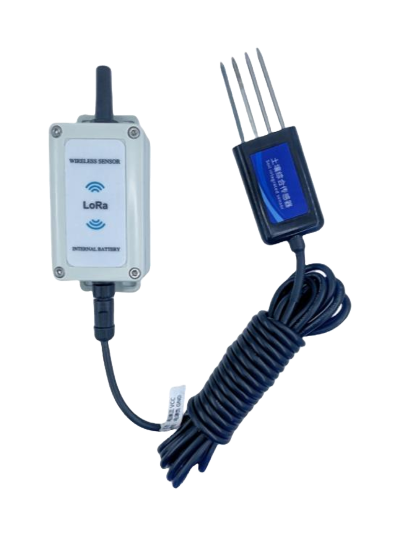Water scarcity is increasingly shaping the way farmers manage their fields. Agriculture is responsible for about 70% of global freshwater withdrawals, and in many regions, irrigation water is the single largest production cost after labor and fertilizer. Traditional irrigation scheduling, watering by habit or fixed intervals, often results in over- or under-irrigation, wasting both water and energy.
Soil moisture monitoring is emerging as one of the most effective tools to address this challenge. By measuring water availability directly in the root zone, farmers can apply water only when it is truly needed. When combined with automated irrigation, these systems close the gap between plant requirements and farmer practice, leading to significant savings in both water and cost.

The Problem: Inefficient Water Use
Most farms rely on calendar-based irrigation, for example, watering every 3-5 days regardless of actual plant demand. While this reduces risk of crop stress, it frequently results in:
Excess water use, which drives up pumping and energy costs.
Nutrient leaching, as fertilizers wash beyond the root zone.
Yield instability, when soils swing between over-saturation and drought stress.
Studies show that in many systems, 30–50% of irrigation water is effectively wasted due to these inefficiencies.
The Solution: Soil Moisture Monitoring
Soil moisture sensors: whether capacitance probes, tensiometers, or resistive blocks, track the amount of plant-available water in real time. By setting thresholds between field capacity (the soil’s maximum water retention after drainage) and wilting point (when plants can no longer extract water), irrigation can be fine-tuned to keep roots consistently in their optimal zone.
This data-driven approach:
-
Reduces water consumption by avoiding unnecessary irrigations.
-
Cuts costs associated with water pumping, electricity, or diesel.
-
Protects fertilizer investments by reducing nutrient leaching.
-
Stabilizes yields by avoiding drought or waterlogging stress.

Cost Savings and Sustainability
Farmers adopting soil moisture monitoring commonly report:
20–40% less water use
10–30% savings in pumping/energy costs
15–25% fertilizer savings (by reducing leaching)
5–15% yield improvements due to more stable soil conditions
Beyond economics, precision water management contributes to groundwater conservation, reduced nutrient runoff, and more resilient cropping systems under climate variability.
Conclusion
Soil moisture monitoring transforms irrigation from guesswork to precision management. Whether in open-field maize, orchards, cotton under pivots, or greenhouse tomatoes, the science is clear: measuring what matters—soil water—leads to smarter water use, lower costs, and more sustainable agriculture.
Documented Benefits from Scientific Studies
The advantages of soil moisture–based irrigation are not theoretical; they are well documented across crops, climates, and irrigation systems. Several key studies show clear reductions in water use and improvements in irrigation efficiency:
Datta & Taghvaeian (2023), Agricultural Water Management: Review of U.S. studies: soil-water-sensor scheduling saved up to 38% water compared to traditional scheduling, with similar or improved yields.
O’Shaughnessy et al. (2023), Frontiers in Plant Science: Cotton trial in Texas using automated sensor controllers saved ≥20% irrigation under deficit strategies, while maintaining yields.
El-Naggar et al. (2020), Agricultural Water Management: In peas and beans, wireless sensor scheduling applied 27–45% less irrigation than soil-water-balance scheduling, without yield loss.
Camporese et al. (2021), Frontiers in Water: In Italian maize, soil moisture sensors cut irrigation by ~16–35 mm, with projected ~8% cost savings and no yield penalty.
Millán et al. (2020), Sensors: Hedgerow olive orchards with automatic scheduling optimized irrigation timing and distribution, improving water productivity.
de Oliveira et al. (2021), Water: Greenhouse tomato trials in Brazil using automated drip irrigation triggered by VWC thresholds showed improved WUE and yield.
Jabro et al. (2020), Sensors: Sugar beet irrigation triggered at 50% available water via Watermark® sensors enhanced water-use efficiency and reduced unnecessary applications.
Vories et al. (2021), Precision Agriculture: Cotton under center-pivot variable-rate irrigation achieved higher irrigation water-use efficiency with sensor-driven prescriptions.
Vera et al. (2021), Journal of Horticultural Science & Biotechnology: Review of dielectric soil-moisture automation reported significant water, energy, and labor savings across systems.
Lakhiar et al. (2024), Agriculture: Comprehensive review of precision irrigation found consistent WUE gains and water-use reductions with soil moisture sensors across diverse crops and climates.
